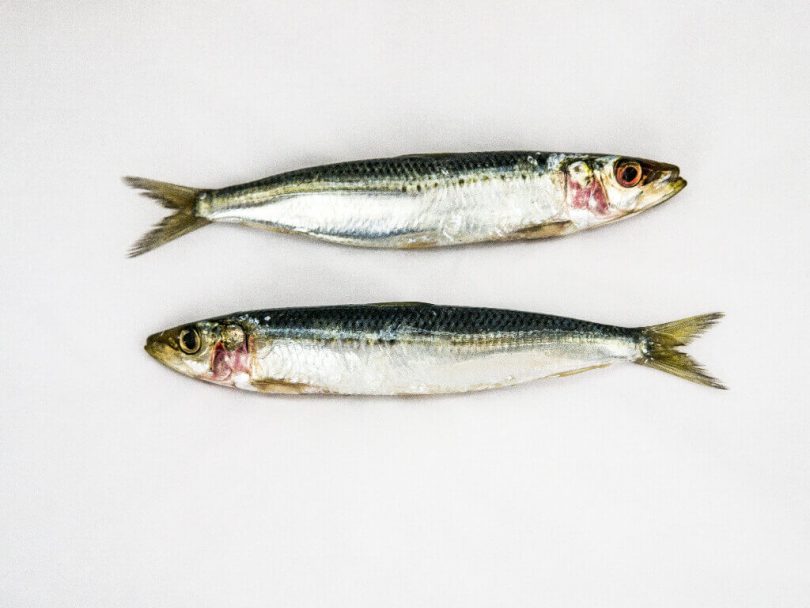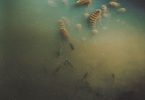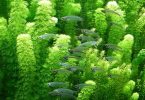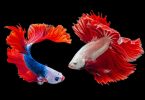Table of Contents
Have you ever wondered if it’s possible to farm sardines right in the comfort of your own home through an aquarium? Sardines are small, nutrient-rich fish that are not only delicious but also packed with health benefits.
In this blog post, we will explore the idea of cultivating these little wonders in an aquarium, from understanding their life cycle and habitat preferences to delving into the basics of aquarium farming.
We’ll also discuss the feasibility and challenges of sardine farming, the key factors for maintaining their health, economic considerations, and the potential environmental impact. So, let’s dive in and explore the exciting world of sardine farming in an aquarium!
Understanding Sardines
Before we delve into the possibility of farming sardines in an aquarium, let’s get to know these fascinating fish a bit better.
Sardines are small, oily fish belonging to the Clupeidae family. They are abundant in many parts of the world and are known for their silver-colored bodies and distinctive flavor.
Sardines are highly nutritious, packed with omega-3 fatty acids, vitamins, and minerals, making them an excellent addition to a healthy diet.
Life Cycle of Sardines
To understand whether sardine farming in an aquarium is feasible, it’s essential to explore their life cycle. Sardines typically follow a simple life cycle, with spawning, larval, juvenile, and adult stages.
Spawning usually occurs in warm waters near the coast, where females release their eggs and males release sperm to fertilize them. Once the eggs are fertilized, they hatch into larvae, which are tiny and planktonic, drifting with the ocean currents.
As the larvae grow, they transform into juveniles and start forming schools to protect themselves from predators. Juvenile sardines prefer shallow coastal waters, which provide abundant food sources and protection. As they reach maturity, they move into deeper waters, joining larger shoals of adult sardines.
Understanding this life cycle is crucial for successful aquarium farming, as it helps create an environment that mimics their natural habitat during each stage of their development.
Habitat Preferences
Sardines are highly adaptable fish that prefer temperate and tropical waters. They are often found in large schools near the surface, feeding on plankton and small fish.
Their preference for coastal areas is significant as it influences the conditions necessary for successful sardine farming in an aquarium.
In an aquarium setting, replicating the natural habitat of sardines is essential. This means providing enough space for them to school, ensuring appropriate water temperature, and maintaining water quality that supports their well-being.
Additionally, sardines are social fish, so it’s crucial to have a sizeable school of them to promote their natural behavior and reduce stress.
Aquarium Farming Basics
Now that we have a better understanding of sardines and their habitat preferences, let’s explore the basics of farming them in an aquarium.
While it may be challenging to fully replicate their natural environment, with the right knowledge and dedication, it is indeed possible to create a suitable space for these delightful fish.
Aquarium Specifications
When it comes to setting up an aquarium for sardine farming, size matters. Sardines require ample swimming space, especially when they grow into adults.
A larger tank or aquarium, ideally holding at least a few hundred gallons of water, is essential to accommodate a school of sardines comfortably.
A rectangular-shaped aquarium is preferred as it provides more horizontal swimming space compared to a tall tank.
Filtration is another critical aspect to consider. Sardines produce waste, and efficient filtration systems are necessary to maintain excellent water quality. A combination of mechanical, biological, and chemical filtration methods can help keep the water clean and free from harmful substances.
Water Conditions
Maintaining appropriate water conditions is vital for the health and well-being of sardines in an aquarium farm. Sardines thrive in water with a temperature range of 60°F to 72°F (15°C to 22°C).
It’s essential to monitor and regulate the water temperature consistently, as drastic fluctuations can stress the fish and impact their overall health.
Additionally, sardines require water with a neutral to slightly alkaline pH level, typically ranging from 7.0 to 8.5.
Regular testing of water parameters is necessary to ensure that the pH remains within the suitable range. Remember to acclimate new fish slowly to avoid shocking them with sudden changes in water conditions.
Feasibility
Farming sardines in an aquarium is indeed possible, but it comes with certain challenges and considerations. Sardines are shoaling fish, meaning they thrive in large groups. Therefore, you’ll need a sufficiently large aquarium to accommodate a sizable school of sardines comfortably.
A tank with a minimum capacity of 100 gallons is recommended for a small group of sardines. The aquarium should be well-maintained, and the water quality must be closely monitored.
In the wild, sardines are highly migratory, swimming long distances in large schools. To mimic their natural habitat, you should provide ample space for them to swim freely and engage in their shoaling behavior.
Additionally, sardines are known for their high metabolic rate, so maintaining a stable water temperature and providing adequate filtration and aeration are essential to their well-being.
To start your sardine farm, you’ll need to find a reliable source for acquiring healthy sardine fry or juveniles. Sustainable and ethical sources are critical to protect the marine ecosystem and ensure the longevity of this delightful species.
Challenges
While the idea of having an aquarium filled with lively sardines is enchanting, it’s crucial to be aware of the challenges you may face as an aspiring sardine farmer.
1. Tank Size and Space: As mentioned earlier, sardines require a significant amount of space to thrive. A small or overcrowded tank can lead to stress and health issues among the fish. Moreover, a larger aquarium means more significant responsibilities, such as water maintenance and filtration.
2. Water Quality Management: Sardines are sensitive to changes in water quality. Ammonia, nitrite, and nitrate levels should be diligently monitored and kept at appropriate levels. Regular water changes and proper filtration systems are vital to ensure a healthy environment for the sardines.
3. Feeding Requirements: Sardines have specific dietary needs. In the wild, they primarily feed on plankton and small fish. To keep them healthy and vibrant in captivity, you’ll need to provide a balanced diet that closely resembles their natural food sources.
4. Reproduction and Overpopulation: Breeding sardines in an aquarium can be challenging and might lead to overpopulation if not carefully managed. This can put a strain on the aquarium’s ecosystem and lead to health issues for the fish.
5. Social Behavior: Sardines are social creatures that thrive in the company of their own kind. Maintaining a harmonious and stable social structure within the school is crucial to their well-being.
6. Disease Susceptibility: Like any other fish, sardines are susceptible to diseases. Close monitoring, quarantine procedures for new fish, and maintaining optimal water conditions can help prevent outbreaks.
Maintaining Sardine Health
To ensure the health and well-being of your sardines in the aquarium, you need to pay close attention to their diet requirements and disease prevention.
Diet Requirements
Sardines are known for their voracious appetite and need for a varied diet to meet their nutritional needs. In the wild, they feed on plankton, crustaceans, and small fish.
To replicate their natural diet in captivity, you can provide them with high-quality commercial fish flakes or pellets specifically formulated for marine fish.
Additionally, supplementing their diet with live or frozen foods like brine shrimp, daphnia, and copepods will offer essential nutrients and keep them engaged in hunting behaviors.
Feeding frequency is also essential. Offer small portions multiple times a day to prevent overeating and ensure that all the fish have access to food. Uneaten food should be removed promptly to maintain water quality.
Disease Prevention
Preventing diseases in your sardine aquarium is essential for their overall health and longevity. Here are some measures you can take to minimize the risk of diseases:
1. Quarantine New Fish: Before introducing any new sardines to the main aquarium, isolate them in a separate quarantine tank for a few weeks. This period allows you to observe them for any signs of illness without risking the health of the entire school.
2. Maintain Clean Water: Regularly test the water parameters and keep them within the optimal range for sardines. Perform regular water changes to reduce the buildup of harmful substances and maintain excellent water quality.
3. Avoid Overcrowding: Overcrowding can lead to stress, aggression, and increased disease transmission among the fish. Make sure your aquarium is adequately sized and that the number of sardines is appropriate for the tank capacity.
4. Provide a Balanced Diet: A well-balanced diet boosts the immune system of sardines, making them more resilient to potential infections. Proper nutrition is key to their overall health and disease prevention.
5. Regular Observation: Pay close attention to the behavior and appearance of your sardines. Any signs of abnormal behavior, lethargy, loss of appetite, or physical abnormalities should be addressed promptly.
Economic Considerations
Before embarking on any business venture, it’s crucial to evaluate the economic feasibility. When it comes to farming sardines in an aquarium, several factors need to be considered.
First and foremost, setting up and maintaining a suitable aquarium for sardine farming can be a significant initial investment.
Sardines are schooling fish that require ample space to thrive, so a large aquarium with proper filtration systems would be necessary.
Additionally, the cost of acquiring the initial stock of sardines, suitable feed, and equipment for the aquarium must be factored in.
Moreover, sardines reproduce rapidly, leading to overcrowding in the aquarium and potentially causing health issues for the fish. This means that continuous monitoring and management are required, which might involve further expenses.
On the other hand, if successful, sardine farming could lead to a consistent supply of these fish, reducing the need for purchasing them from external sources. The potential cost savings on sardine purchases, coupled with the appeal of homegrown seafood, might attract consumers and provide a competitive edge in the market. However, to determine whether the venture is economically viable in the long run, detailed financial planning and analysis are essential.
Potential Profits
The prospects of potential profits in sardine farming largely depend on several factors. One of the significant determinants is the market demand for sardines. If there is a high demand for fresh and locally farmed sardines, especially in the area where the aquarium is located, it can lead to increased sales and profitability.
To maximize profits, diversifying the products derived from sardines could be explored. For example, sardine-based products such as canned sardines, sardine oil, or fish meal have various applications and can cater to different market segments.
Finding creative ways to utilize all parts of the sardine can contribute to increased revenues and reduced waste.
Additionally, establishing partnerships with local restaurants, seafood markets, or grocery stores can help reach a broader customer base.
The sustainable and homegrown aspect of sardine farming may also attract environmentally-conscious consumers willing to pay a premium for ethically sourced seafood.
However, it’s crucial to keep in mind that sardine farming, like any aquaculture venture, carries inherent risks. Unforeseen challenges such as disease outbreaks, changes in market demand, or fluctuations in fish prices can impact profitability.
Therefore, conducting thorough market research and staying adaptable to changing conditions is crucial for long-term success.
Market Demand
Understanding the market demand for farmed sardines is a critical aspect of assessing the feasibility of this venture. While sardines are a popular seafood choice, the demand for farmed sardines may vary depending on factors such as geographical location and consumer preferences.
In regions where sardines are already a staple in the local cuisine, the demand for fresh, locally farmed sardines could be higher.
Consumers who prioritize sustainability and support for local businesses might be willing to pay a premium for farmed sardines that are ethically raised and harvested.
Furthermore, the demand for sardines and other seafood can fluctuate based on factors such as seasonal variations and economic conditions.
Ensuring a stable and continuous supply of sardines year-round can be a challenge in aquarium-based farming. It may require sophisticated breeding and harvesting techniques to maintain a constant production cycle.
To assess the market demand accurately, conducting surveys, analyzing consumer trends, and engaging with potential customers can provide valuable insights. Building a brand and marketing strategy that highlights the unique selling points of locally farmed sardines can also help create a loyal customer base and drive demand.
Environmental Impact
The environmental impact of sardine farming in an aquarium is a crucial aspect that cannot be overlooked. Aquaculture, when not managed sustainably, can lead to adverse effects on the environment and surrounding ecosystems. Therefore, understanding and mitigating potential environmental risks is essential.
One of the primary concerns with sardine farming is waste management. The accumulation of uneaten feed and fish waste can lead to water quality issues, negatively impacting the health of the sardines and other aquatic organisms in the aquarium.
Implementing efficient filtration systems and regular water testing can help maintain optimal water conditions and minimize environmental impact.
Another environmental consideration is the sourcing of feed for the sardines. Using sustainably sourced feed that minimizes reliance on wild-caught fish can help reduce the overall ecological footprint of the aquaculture operation.
Moreover, exploring alternative feeds with a lower environmental impact, such as plant-based options, could be beneficial.
Furthermore, sardine farming should be mindful of its potential interactions with the wild marine ecosystem. Escapees from the aquarium and the release of untreated water back into the environment can introduce non-native species and disrupt local ecosystems.
Implementing secure containment measures and responsible water discharge protocols are essential for preventing such issues.
Conclusion
In conclusion, farming sardines in an aquarium is indeed possible with the right knowledge, dedication, and resources. Understanding their life cycle, habitat preferences, and dietary needs are vital for successfully cultivating these fascinating fish.
While there are challenges to overcome, the potential profits and market demand can make this venture a rewarding one.
However, it’s important to prioritize the health and well-being of the sardines and take necessary measures to minimize the environmental impact of the farming process.
So, if you’re up for the challenge and have a passion for these shimmering swimmers, consider diving into the world of sardine farming in an aquarium – it might just be a fulfilling and exciting journey!







